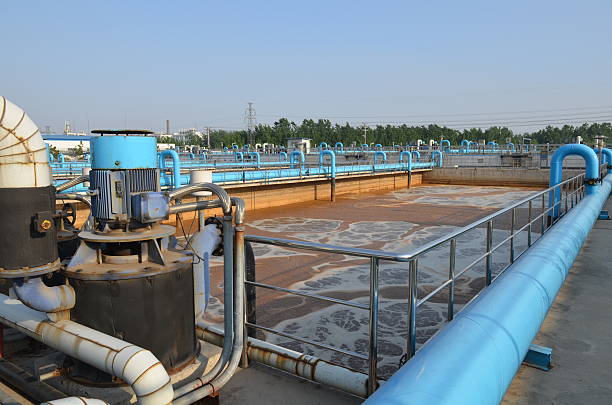Sewage Treatment Plant & Technologies
Sewage treatment (also known as domestic wastewater treatment or municipal wastewater treatment) is a type of wastewater treatment that aims to remove contaminants from sewage so that it can be reused in the environment, a process known in the industry as secondary treatment. The wastewater that leaves the sewage treatment plant may contain some dissolved contaminants, such as sediments and soluble organic compounds (e.g., organics), nutrients, and heavy metals.

Some technologies used in STP include:
- MBBR: MBBR is the process of creating microorganisms that consume sludge. Since the bulk volume of MBBR is made up of the swelled media (or agitated media) within the aeration tank, this process increases the efficiency of BOD and COD removal while also eliminating the need for further solids settling or thickening processes. The volume becomes smaller, and liquid fills in the spaces between solid particles. In an MBBR system, the circulating liquid has a larger particle size than 10 microns, and all the particles carrying it are either liquids or gases at room temperature. Since microbes need organics to survive, they cannot survive on heavy solids except for certain API types. Therefore, MBBR produces sludge biomass depending on the organic matter available in the sewage that can be converted into carbon dioxide molecules; this process reduces emissions of CO2 into the air.
- SBR: Sequencing batch reactors (SBR) or sequential batch reactors are a type of activated sludge process for the treatment of wastewater. SBR reactors treat wastewater, such as sewage or output from anaerobic digesters or mechanical biological treatment facilities, in batches. Oxygen is bubbled through the mixture of wastewater and activated sludge to reduce the organic matter, measured as biochemical oxygen demand (BOD) and chemical oxygen demand (COD).
- MBR: MBR Technology is a process by which water is filtered through a microfiltration, nanofiltration, and ultrafiltration membrane whose residence time (RT) is reduced along with the high fluxes of the contaminated water. The technology holds three to four times more mixed liquor suspended solids (MLSS) than what can be done in the traditional anaerobic sludge treatment process and does not require any additional facilities for its production.
- Electrocoagulation (EC) is a treatment technique used in wastewater treatment and reclaiming waste. It has become a rapidly growing area of wastewater treatment due to its ability to remove contaminants that are generally more difficult to remove by filtration or chemical treatment systems, such as emulsified oil, total petroleum hydrocarbons, refractory organics, suspended solids, and heavy metals. There are many brands of electrocoagulation devices available, and they can range in complexity from a simple anode and cathode to much more complex devices with control over electrode potentials, passivation, anode consumption, and cell REDOX potentials, as well as the introduction of ultrasonic sound, ultraviolet light, and a range of gases and reactants to achieve so-called “advanced oxidation processes” for refractory or recalcitrant organic substances.
- WSPS: Waste stabilization systems (WSS) comprise a single series of anaerobic, facultative, and maturation ponds that continuously treat approximately 6–10 MGD (million gallons per day) of wastewater. WSPS are designed to remove BOD and potentially pathogenic organisms from wastewater prior to final discharge into surface waters. Wastewater treatment requires a minimum of four ponds—initially two anaerobic and later three facultative or maturation ponds. This article reviews the performance and reliability of several different designs.
- The Activated Sludge Process (ASP) is a sewage treatment process designed to reduce the number of solids and materials in wastewater. A series of chemical reactions cause these solids to fall apart, or “deactivate,” by devolving into a liquid. The liquid is then flushed out of the system into an adjacent digester, where it converts over time into biogas through microbial processes.”
Where STP is used:
- Industries such as the food, chemical, pharmaceutical, and textile industries all rely heavily on STP processes to ensure that their wastewater is properly treated before being discharged into the environment
- Institutes and Hospitals
- Commercial and residential areas